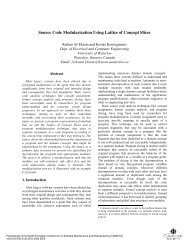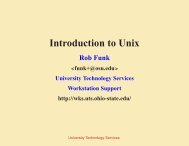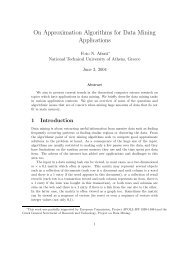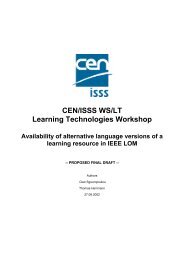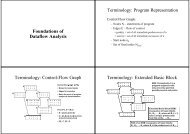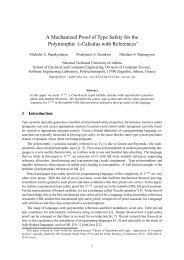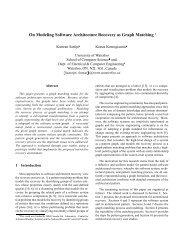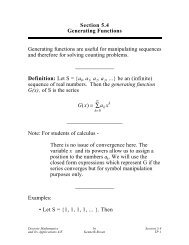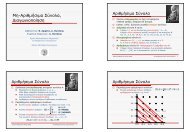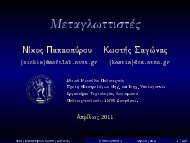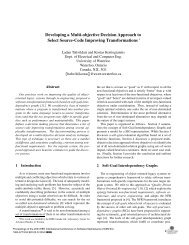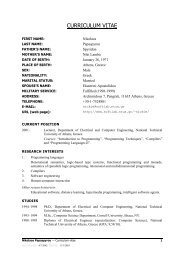Manual
Manual
Manual
Create successful ePaper yourself
Turn your PDF publications into a flip-book with our unique Google optimized e-Paper software.
76 Bison 2.3<br />
terminal and nonterminal symbols at or near the top of the stack. The current state collects<br />
all the information about previous input which is relevant to deciding what to do next.<br />
Each time a look-ahead token is read, the current parser state together with the type of<br />
look-ahead token are looked up in a table. This table entry can say, “Shift the look-ahead<br />
token.” In this case, it also specifies the new parser state, which is pushed onto the top<br />
of the parser stack. Or it can say, “Reduce using rule number n.” This means that a<br />
certain number of tokens or groupings are taken off the top of the stack, and replaced by<br />
one grouping. In other words, that number of states are popped from the stack, and one<br />
new state is pushed.<br />
There is one other alternative: the table can say that the look-ahead token is erroneous<br />
in the current state. This causes error processing to begin (see Chapter 6 [Error Recovery],<br />
page 83).<br />
5.6 Reduce/Reduce Conflicts<br />
A reduce/reduce conflict occurs if there are two or more rules that apply to the same<br />
sequence of input. This usually indicates a serious error in the grammar.<br />
For example, here is an erroneous attempt to define a sequence of zero or more word<br />
groupings.<br />
sequence: /* empty */<br />
{ printf ("empty sequence\n"); }<br />
| maybeword<br />
| sequence word<br />
{ printf ("added word %s\n", $2); }<br />
;<br />
maybeword: /* empty */<br />
{ printf ("empty maybeword\n"); }<br />
| word<br />
{ printf ("single word %s\n", $1); }<br />
;<br />
The error is an ambiguity: there is more than one way to parse a single word into a<br />
sequence. It could be reduced to a maybeword and then into a sequence via the second<br />
rule. Alternatively, nothing-at-all could be reduced into a sequence via the first rule, and<br />
this could be combined with the word using the third rule for sequence.<br />
There is also more than one way to reduce nothing-at-all into a sequence. This can be<br />
done directly via the first rule, or indirectly via maybeword and then the second rule.<br />
You might think that this is a distinction without a difference, because it does not change<br />
whether any particular input is valid or not. But it does affect which actions are run. One<br />
parsing order runs the second rule’s action; the other runs the first rule’s action and the<br />
third rule’s action. In this example, the output of the program changes.<br />
Bison resolves a reduce/reduce conflict by choosing to use the rule that appears first in<br />
the grammar, but it is very risky to rely on this. Every reduce/reduce conflict must be<br />
studied and usually eliminated. Here is the proper way to define sequence:<br />
sequence: /* empty */



